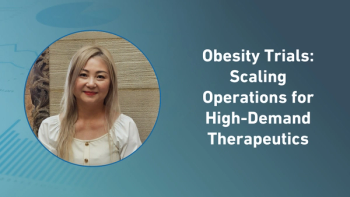
2025 Trends: Using Unstructured Data in Clinical Research
In this video interview, Sujay Jadhav, CEO of Verana Health, discusses how the use of unstructured data can help improve clinical research in 2025.
In a recent video interview with Applied Clinical Trials, Sujay Jadhav, CEO of Verana Health, discussed potential advancements the clinical research industry could see in 2025. Jadhav highlighted how unstructured data like physician notes and imaging data can be leveraged to improve disease identification and progression tracking. He also talked synthetic control arms and how they can replace expensive non-treatment arms, enhancing trial efficiency.
ACT: What trends do you think we’ll see in 2025 with real-world evidence (RWE) and real-world data (RWD) in clinical research?
Jadhav: I would say, as we move into 2025 there's two generic themes that I see in terms of how real-world evidence and real-world data is going to be utilized in clinical research. I think one is around the data and expanding the type of data that we're using for clinical research. The second one is what I like to bucket it under, helping productionize, using external/synthetic control arms in the overall process. When you're looking at the data side of the house, historically, a lot of the data that has been used for clinical research, a little bit more mainstream, has been more structured data, seeing a good movement into leveraging unstructured data. There's different types of unstructured data, things such as physician notes, as an example, is an unstructured data source that we are leveraging in terms of helping facilitate improved clinical research. There's also other unstructured data sources, different data sources like imaging data as well, and we're starting to use, and see usage of imaging data quite a bit in terms of helping identify patients with certain diseases, understanding their disease progression as well, and then rolling that into clinical research. The good thing about imaging data is it's like an unbiased data source. From that perspective, the credibility, the quality of including that is very, very good.
Newsletter
Stay current in clinical research with Applied Clinical Trials, providing expert insights, regulatory updates, and practical strategies for successful clinical trial design and execution.





.png)



.png)



.png)
.png)
